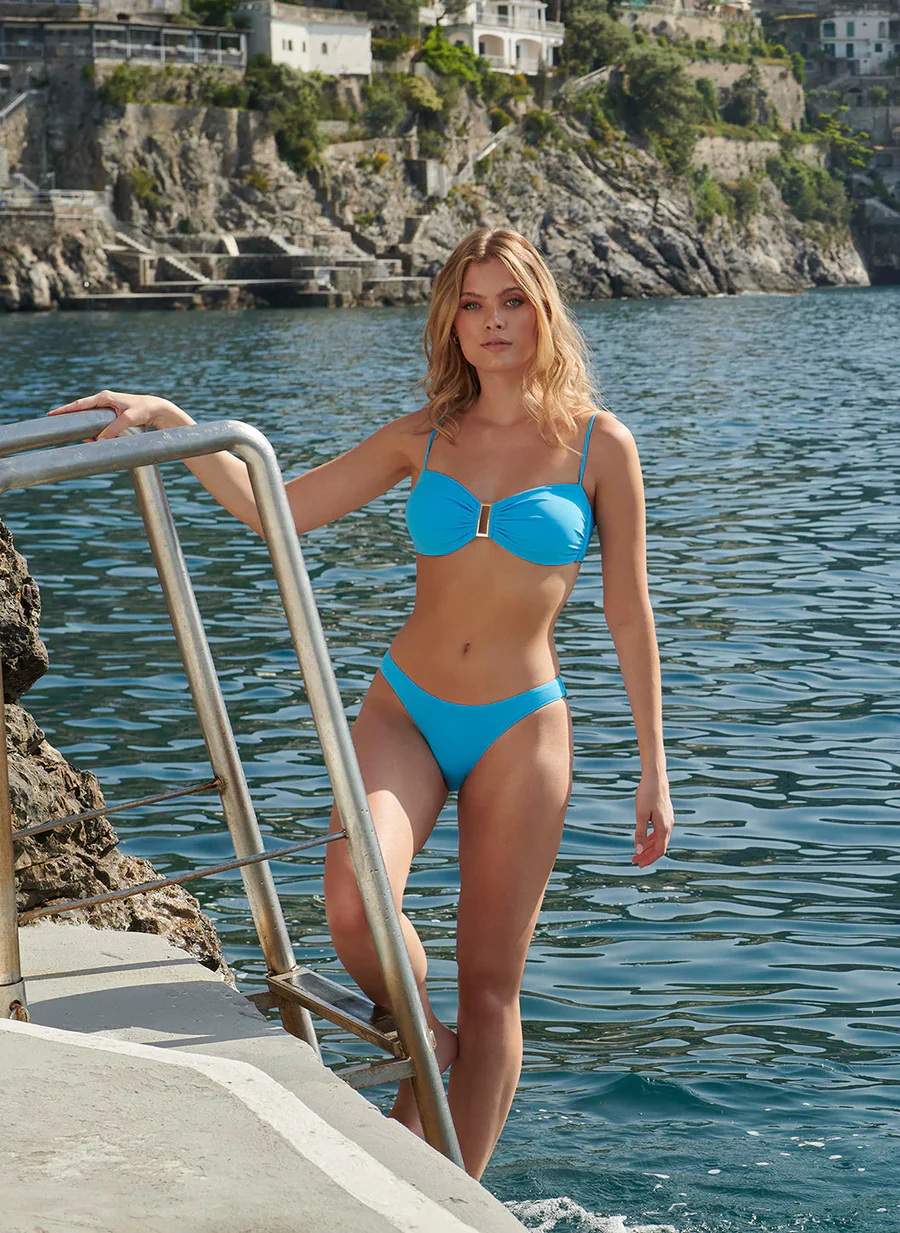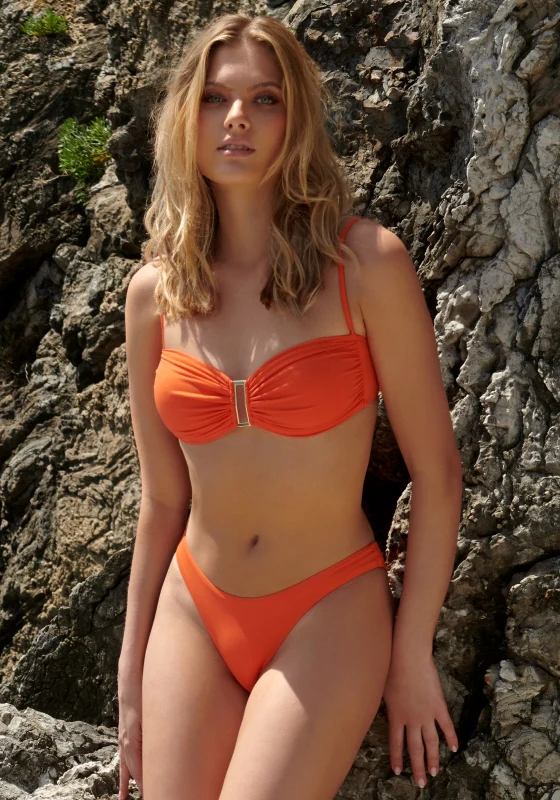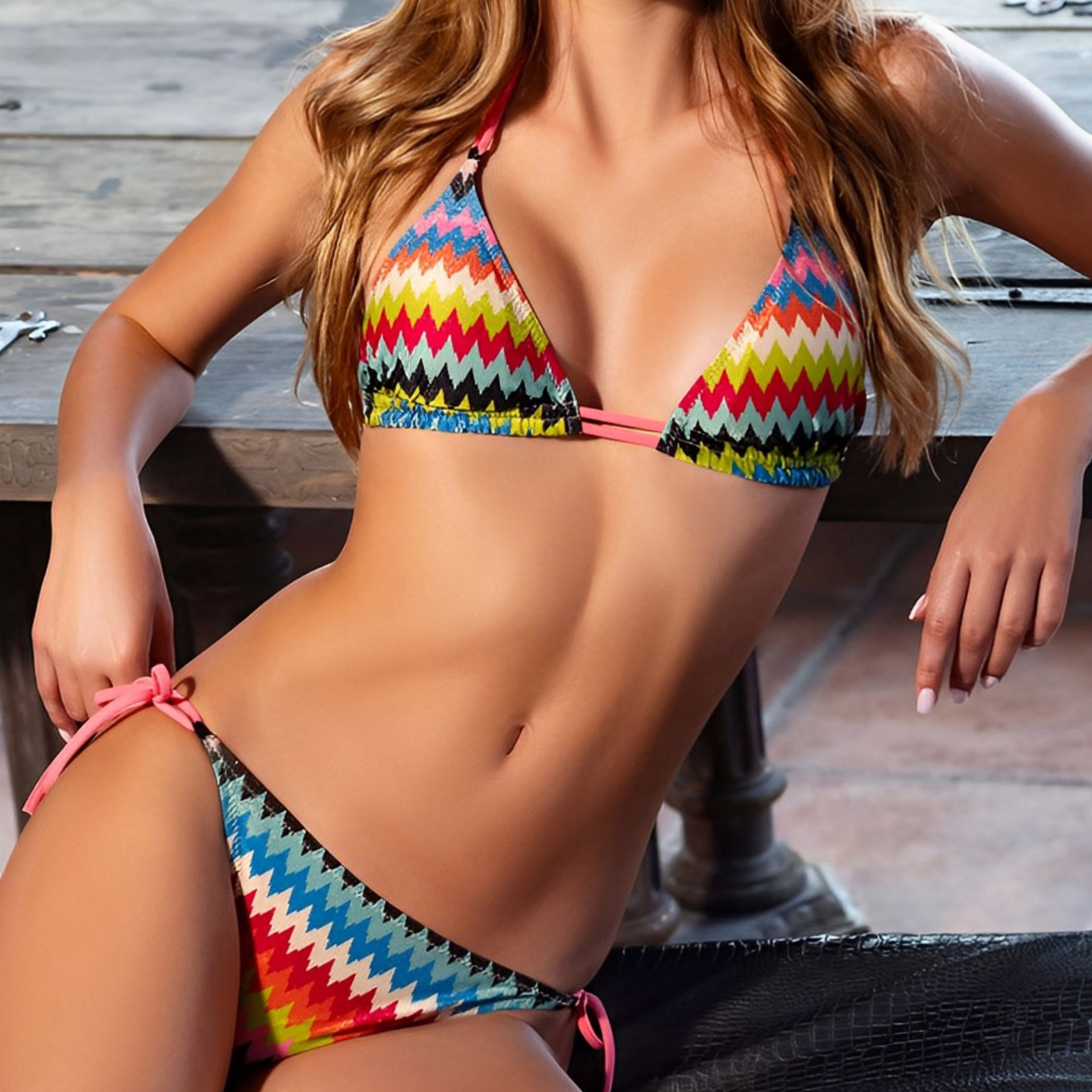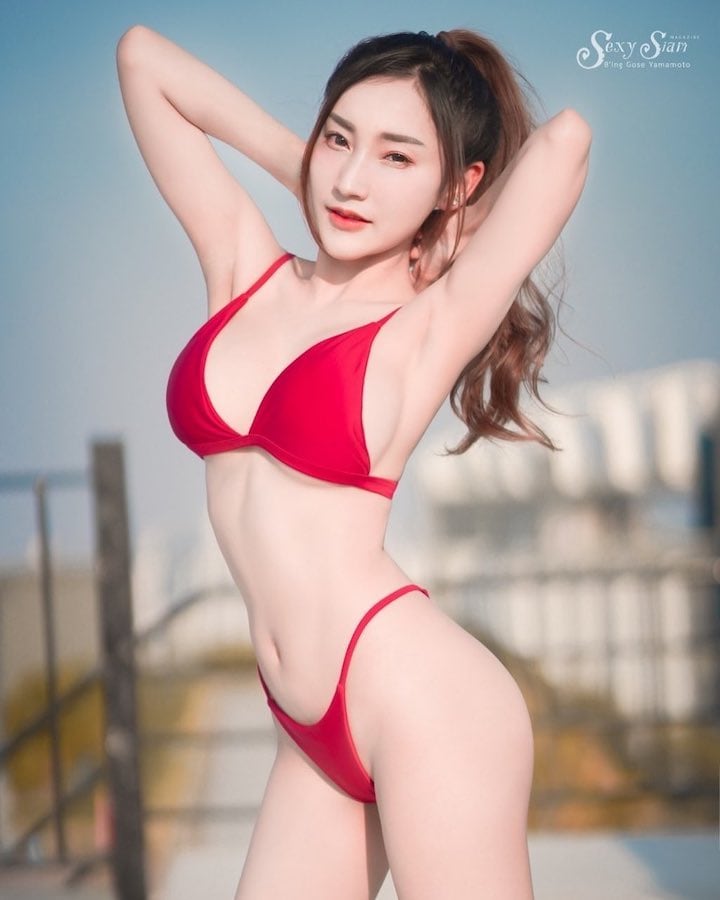Content Menu
● The Rise of Extreme Bikinis
>> The Appeal of Extreme Bikinis
● Reasons to Avoid Extreme Bikinis
● Cultural Implications of Swimwear Choices
>> The Body Positivity Movement
● The Historical Context of Bikinis
>> Early Influences on Swimwear
● Micro Bikinis: A More Extreme Variant
>> The Role of Influencers and Celebrities
● Health Considerations Related to Swimwear Choices
● Navigating Personal Choices in Swimwear
● The Future of Swimwear Trends
>> Inclusive Designs
● Conclusion
● Frequently Asked Questions
>> 1. What are extreme bikinis?
>> 2. Why do some people choose not to wear extreme bikinis?
>> 3. How does the body positivity movement influence swimwear choices?
>> 4. Are there any practical considerations when choosing swimwear?
>> 5. Can wearing an extreme bikini boost confidence?
● Citations:
Swimwear has evolved significantly over the years, reflecting changes in societal norms, personal expression, and body positivity. Among the various styles available, extreme bikinis have emerged as a bold choice for many. However, this trend is not without its controversies and considerations. In this article, we will explore the reasons why some individuals may choose to avoid extreme bikinis, the cultural implications of swimwear choices, and the broader context of body image and self-expression.

The Rise of Extreme Bikinis
Extreme bikinis are characterized by their minimal fabric and daring designs. They often feature high-cut legs, tiny tops, and bold colors or patterns. This style has gained popularity in recent years, particularly among those looking to make a statement at the beach or pool. However, the appeal of extreme bikinis can vary greatly from person to person.
The Appeal of Extreme Bikinis
- Self-Expression: For many, wearing an extreme bikini is a form of self-expression. It allows individuals to showcase their bodies and personal style in a way that feels liberating.
- Body Confidence: Some wearers find that donning a minimal bikini boosts their confidence and encourages body positivity. It can serve as a declaration of self-love and acceptance.
- Fashion Statement: Extreme bikinis are often seen as trendy and fashionable, appealing to those who want to stay on top of swimwear trends.

Reasons to Avoid Extreme Bikinis
While extreme bikinis can be empowering for some, there are several reasons why others may opt for more traditional swimwear options:
- Comfort Issues: Many extreme bikinis can be uncomfortable due to their minimal coverage. The lack of fabric can lead to chafing or discomfort while moving or swimming.
- Body Image Concerns: Not everyone feels confident in revealing swimwear. For some individuals, wearing an extreme bikini might exacerbate insecurities about their bodies.
- Cultural and Social Pressures: In some cultures or social circles, wearing revealing swimwear may be frowned upon. This pressure can lead individuals to choose more modest options.
- Practicality: For activities such as beach volleyball or swimming laps, more coverage may be preferable for ease of movement and comfort.
- Personal Preference: Ultimately, personal style plays a significant role in swimwear choices. Some individuals simply prefer the look and feel of more traditional swimwear.
Cultural Implications of Swimwear Choices
The choice of swimwear can reflect broader cultural attitudes toward body image and femininity. As society becomes more accepting of diverse body types and expressions of self-love, the popularity of extreme bikinis may continue to rise. However, this acceptance must also consider those who feel marginalized by such trends.
The Body Positivity Movement
The body positivity movement has played a crucial role in changing perceptions around swimwear. It encourages individuals to embrace their bodies regardless of societal standards. This shift has led many to feel empowered when wearing revealing swimwear like extreme bikinis.

The Historical Context of Bikinis
Understanding the evolution of bikinis provides insight into contemporary swimwear choices. The bikini as we know it was officially introduced on July 5, 1946, by French designer Louis Réard at the Piscine Molitor in Paris. Réard's design was named after Bikini Atoll, where nuclear tests were conducted just days prior; he believed his creation would have a similar explosive impact on fashion[1][5].
Early Influences on Swimwear
Before the bikini's debut, women wore various forms of two-piece swimsuits dating back to ancient civilizations. The concept has roots in ancient Greece and Rome where women donned garments that resembled modern bikinis[1]. However, societal norms during the Middle Ages restricted women's clothing choices significantly until the early 20th century when swimsuits began to evolve again.
Micro Bikinis: A More Extreme Variant
In recent years, micro bikinis have taken the trend for minimalism even further. These styles use even less fabric than traditional extreme bikinis and are designed to showcase the body with bold cuts[2].
The Role of Influencers and Celebrities
Social media has played a significant role in popularizing micro bikinis. Influencers and celebrities frequently showcase these daring designs on platforms like Instagram and TikTok, making them more desirable[2]. This visibility encourages many individuals to experiment with bolder swimwear options as they seek to emulate their favorite stars.
Health Considerations Related to Swimwear Choices
Wearing certain types of swimwear can have implications for health that are often overlooked:
- Skin Protection: Extreme exposure from minimal coverage increases risks related to sunburns and skin damage from UV rays. It's essential for wearers to apply adequate sunscreen or consider UV-protective swimwear options.
- Yeast Infections: Wearing wet bathing suits for extended periods can create an environment conducive to yeast infections. Damp conditions allow bacteria to thrive; thus, changing out of wet swimwear promptly is advisable[7].
- Physical Comfort: As mentioned earlier, many extreme bikinis may not provide sufficient support or comfort during physical activities like swimming or beach sports.

Navigating Personal Choices in Swimwear
Choosing what to wear at the beach or pool is a deeply personal decision influenced by various factors:
- Individual Comfort: Prioritizing comfort is essential when selecting swimwear. Everyone's body is different; what feels good for one person may not work for another.
- Confidence Level: Understanding one's own comfort with body exposure is key. Some may feel confident in an extreme bikini while others may prefer more coverage.
- Activity Type: Consideration of planned activities can influence swimwear choices. More active pursuits may require different styles than lounging by the pool.
The Future of Swimwear Trends
As fashion continues to evolve, so too will trends in swimwear. The rise of sustainable fashion is influencing many designers who are now creating eco-friendly swimsuits that do not compromise style for environmental responsibility. Brands are increasingly focusing on materials that reduce environmental impact while still providing stylish options for consumers looking for both functionality and aesthetic appeal.
Inclusive Designs
The future also points toward inclusivity in design—swimwear brands are beginning to cater not only to different body types but also diverse cultural backgrounds with designs that reflect varying standards of modesty and style preferences[6].
Conclusion
In conclusion, while extreme bikinis represent a bold fashion choice for some, they are not universally appealing. Factors such as comfort, body image concerns, cultural pressures, practicality needs, health considerations, and personal preferences all play significant roles in determining individual swimwear choices. Ultimately, it is essential to respect diverse perspectives on swimwear and recognize that everyone has their unique relationship with their bodies and clothing.

Frequently Asked Questions
1. What are extreme bikinis?
- Extreme bikinis are characterized by minimal fabric and daring designs that offer very little coverage.
2. Why do some people choose not to wear extreme bikinis?
- Reasons include discomfort, body image concerns, cultural pressures, practicality for activities, and personal preference.
3. How does the body positivity movement influence swimwear choices?
- The movement encourages acceptance of all body types and promotes confidence in wearing revealing clothing like extreme bikinis.
4. Are there any practical considerations when choosing swimwear?
- Yes, factors like activity type (swimming vs lounging) and individual comfort should guide swimwear choices.
5. Can wearing an extreme bikini boost confidence?
- For some individuals, wearing an extreme bikini can enhance feelings of confidence and self-love; however, this varies from person to person.
Citations:
[1] https://www.euronews.com/culture/2023/07/05/culture-re-view-a-short-history-on-the-invention-of-the-bikini
[2] https://www.khy.com/blogs/trendy-womens-clothing/micro-bikinis-why-this-bold-swimwear-trend-is-taking-over
[3] https://en.wikipedia.org/wiki/Bikini_variants
[4] https://strangebikinis.com/blogs/news/6-reasons-not-to-wear-extreme-push-up-swimwear
[5] https://www.historyextra.com/period/20th-century/first-bikini-history-invented/
[6] https://www.lavanguardia.com/mediterranean/20240806/9855474/the-bikinis-and-beach-fashion-that-celebrities-are-wearing-in-the-mediterranean-coast.html
[7] https://www.verywellhealth.com/wet-bathing-suit-yeast-infection-risk-8674827




































































